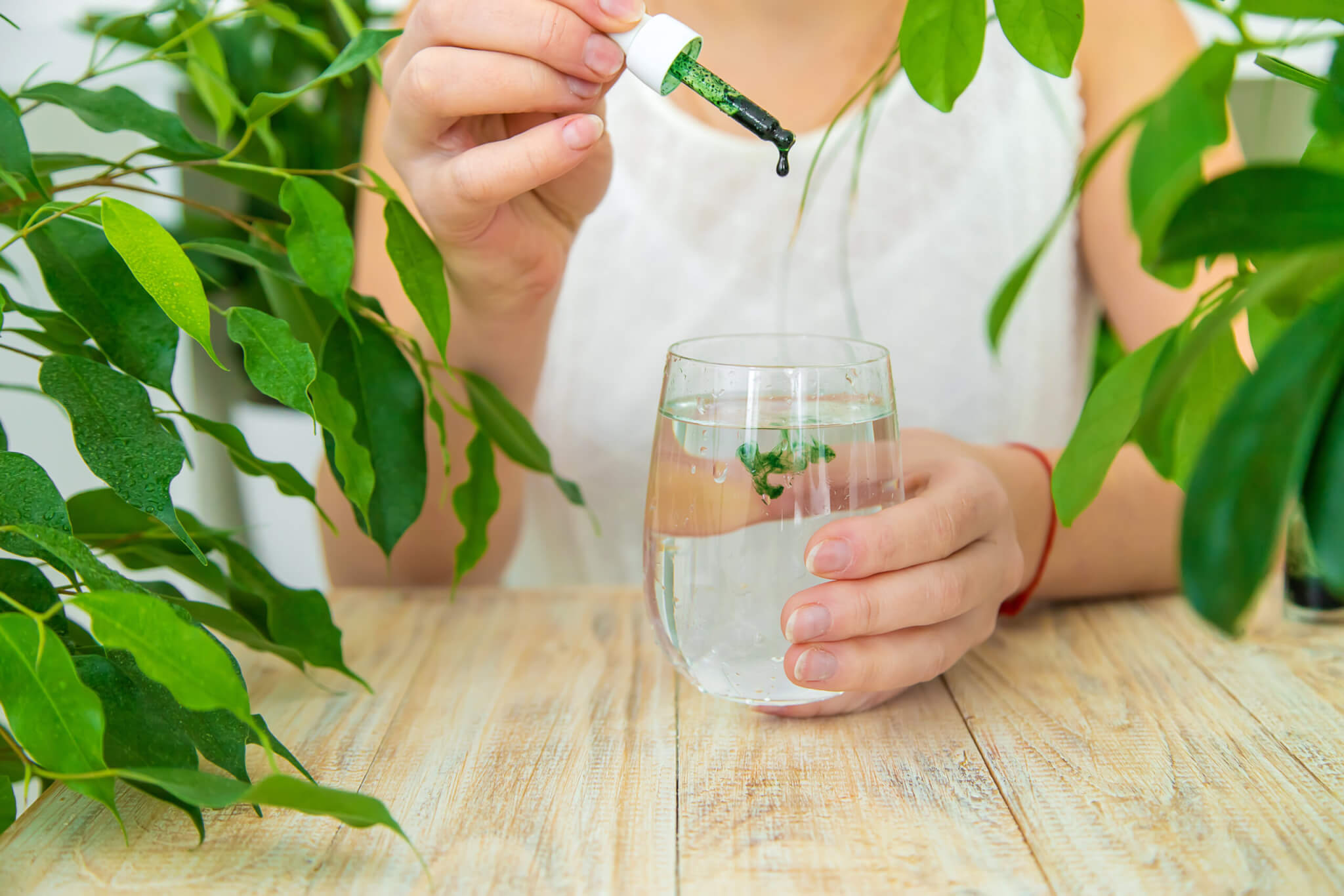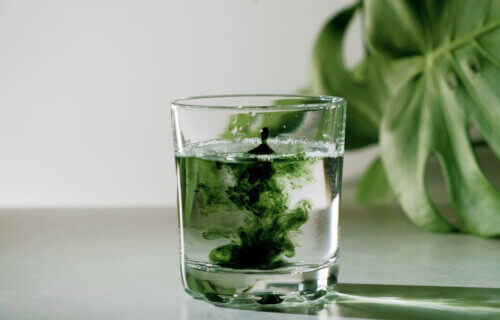The chlorophyll water trend may have started on TikTok, but it’s now taking all of social media by storm, with countless people drinking it as a wellness elixir. People have claimed it can detox your blood, clear up acne, and even prevent cancer. However, chlorophyll water isn’t even technically chlorophyll, so is any of this true?
What is chlorophyll?
If you think back to middle school science class, you might vaguely remember some talk of chlorophyll. Specifically, chlorophyll is a fat-soluble pigment found in plants, which gives vegetables like spinach and asparagus their green color. Plants use it to carry out photosynthesis, converting sunlight, water, and carbon dioxide into nutrition.
In the center of chlorophyll’s chemical structure, a magnesium ion is present. Magnesium is crucial for optimal human health, benefiting blood pressure regulation, nerve and muscle function, and blood sugar control, among other things. Without magnesium, plants wouldn’t have their green color. You can get chlorophyll by eating broccoli, cabbage, parsley, collard greens, and more. To keep the chlorophyll intact, try not to overcook them so that they don’t lose their bright green color. Overcooking degrades chlorophyll, turning it into something called pheophytin.
What is chlorophyll water actually made of?
You can’t drink chlorophyll unless you blend up some green veggies into a smoothie. You might be wondering what chlorophyll water actually is — if it isn’t the juice of spinach.
The trendy drink is actually made of chlorophyllin, which is a water-soluble chemical used in supplements so that it can dissolve into water and be better absorbed by the body. If you look on the back of any chlorophyll pill or supplement, chances are it says chlorophyllin in the fine print on the label.
To make this form, chlorophyll undergoes processing to remove the magnesium ion and replace it with copper. Magnesium is highly reactive and would be easily displaced, so it wouldn’t work to use it in supplements or drinks. By adding copper, the compound is much more stable for supplement applications. Chlorophyll drops also have that vibrant green glow to them because of the copper.

Do the claims live up to the hype?
Not really, and here’s what we know:
- Chlorophyll has antioxidant properties, though they aren’t as notable as other things like vitamin C.
- Research showing that chlorophyll benefits skin only studied topical applications, not oral consumption.
- No human studies have looked into the chlorophyll and cancer link.
- There is no evidence to support that it cuts body odor.
Is it safe?
For most people, it’s a safe supplement. In rarer instances, people might experience diarrhea and stomach cramps. Even though it’s safe, however, it isn’t something you need. Chlorophyll is abundant in green vegetables and fruits. Eating more produce can not only give you more of it, but also additional vitamins, minerals, and antioxidants.
So, what’s the verdict?
You don’t need to hop on the chlorophyll water trend. There’s very little evidence to support the outlandish claims made online about it. Moreover, it isn’t even actually chlorophyll in its most natural form. You’ll only find that in vegetables and fruits. Magnesium deficiency is common, so you’re better off eating whole foods with the magnesium intact rather than copper and salt, which is what you’d get from chlorophyllin instead.
You might also be interested in:
- TikTok is wrong, sea moss does not contain ’92 essential minerals’
- No, brown rice is not healthier than white rice
- Best Water Bottles: Top 5 Reusable Products Most Recommended By Experts

